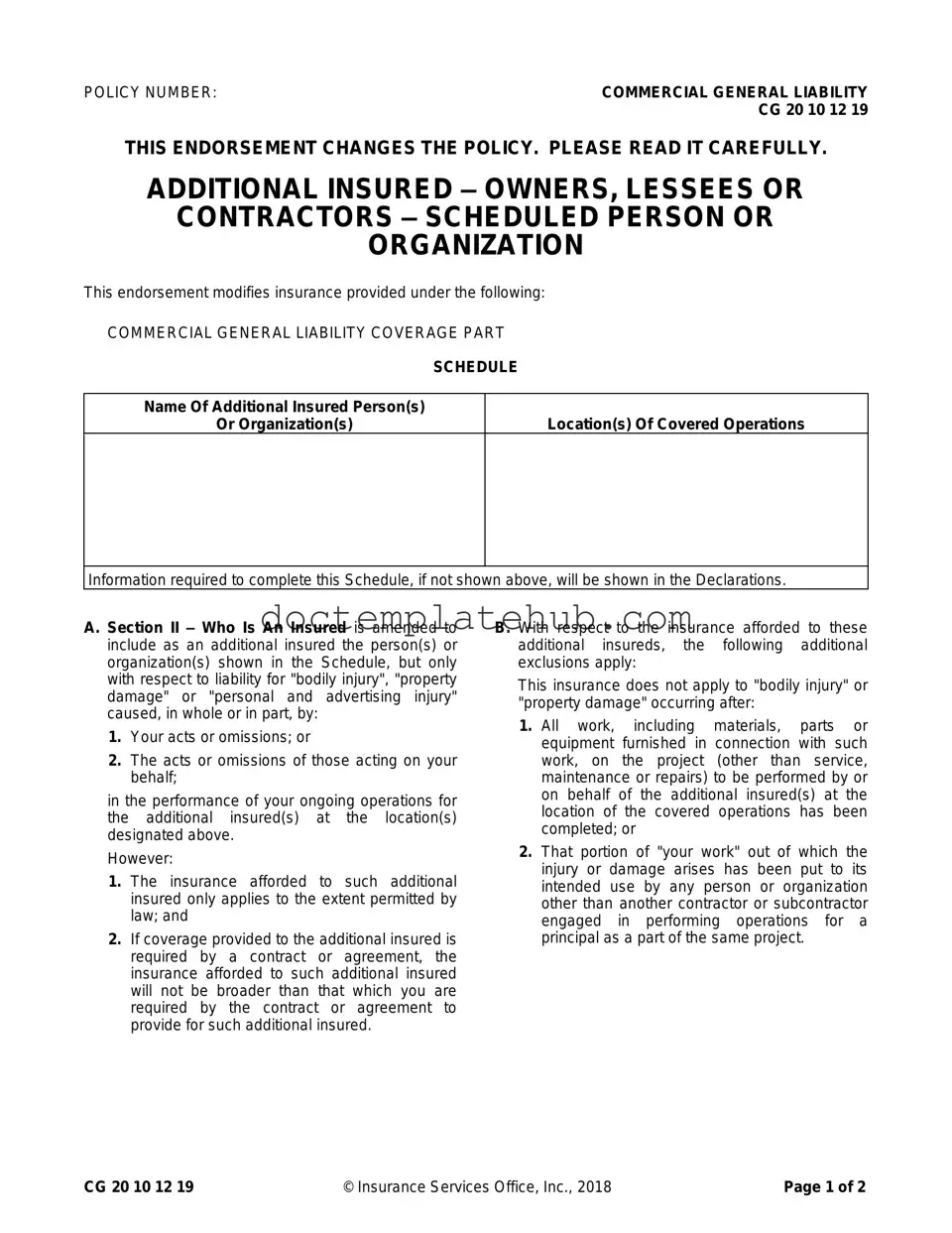What is the purpose of the CG 20 10 07 04 Liability Endorsement form?
The CG 20 10 07 04 Liability Endorsement form serves to add specific individuals or organizations as additional insureds under a Commercial General Liability policy. This endorsement ensures that these additional insureds are covered for certain liabilities that may arise from the actions of the policyholder or those acting on their behalf during ongoing operations.
Who can be listed as an additional insured on this endorsement?
The endorsement allows for any person or organization to be named as an additional insured, provided they are specified in the Schedule section of the form. This typically includes owners, lessees, or contractors involved in a project related to the policyholder’s operations.
What types of liabilities are covered for additional insureds?
Additional insureds are covered for liabilities related to bodily injury, property damage, or personal and advertising injury. However, this coverage only applies if the injury or damage is caused, in whole or in part, by the acts or omissions of the policyholder or their representatives during the performance of ongoing operations for the additional insured.
Are there any limitations on the coverage for additional insureds?
Yes, there are limitations. The coverage for additional insureds is only effective to the extent permitted by law. Additionally, if the coverage is required by a contract, it cannot be broader than what the policyholder is obligated to provide under that contract.
What exclusions apply to the coverage for additional insureds?
The endorsement specifies that coverage does not apply to bodily injury or property damage occurring after all work related to the project has been completed. This includes materials, parts, or equipment furnished in connection with that work. Coverage also ceases if the portion of the work that caused the injury has been put to its intended use by anyone other than another contractor or subcontractor involved in the same project.
How does the endorsement affect the limits of insurance?
The endorsement does not increase the overall limits of insurance. If coverage for an additional insured is required by a contract, the maximum amount the insurer will pay is either the amount specified in the contract or the applicable limits of insurance, whichever is less.
What happens if the work is completed?
If all work on the project is completed, the coverage for additional insureds ceases. This means that any claims related to bodily injury or property damage that arise after completion will not be covered under this endorsement.
Can the additional insureds be held liable for damages?
Yes, additional insureds can still be held liable for damages. However, this endorsement provides them with coverage for liabilities that arise from the actions of the policyholder or their representatives. It is important to note that the endorsement does not absolve additional insureds from their own negligence.
Is it necessary to have this endorsement?
Whether or not to have this endorsement depends on the specific requirements of contracts or agreements related to a project. Many contracts stipulate that additional insured coverage is necessary to protect the interests of the owners or contractors involved.
How can one ensure compliance with the endorsement’s requirements?
To ensure compliance, policyholders should carefully review any contracts or agreements that require additional insured coverage. It is also advisable to consult with an insurance professional to confirm that the coverage aligns with legal requirements and contractual obligations.
